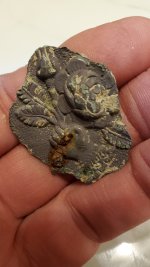Spain let's another galleon get ransacked
CULTURA
España deja expoliar otro galeón
Los cazatesoros acechan el «San Francisco», que naufragó en Japón en 1609. Mientras, ni Cultura ni Exteriores han querido responder la petición de arqueólogos de la Universidad de Texas para investigar el pecio
PABLO M. DÍEZ / CORRESPONSAL EN PEKÍN
ABC, Día 17/09/2010
Por uno de esos accidentes de la Historia, un naufragio en el siglo XVII marcó un hito que ha perdurado hasta hoy en las relaciones entre España y Japón. Pero, por uno de esos despistes de la Historia, la pasividad de la Administración española para rescatar, o buscar, los restos de dicho hundimiento pueden minar los contactos culturales entre ambos países cuatro siglos después.
Corría el año del Señor de 1609 cuando la noche del 30 de septiembre el galeón español «San Francisco» encalló frente a las costas de la prefectura de Chiba, al este de Japón y a unos cien kilómetros de Tokio. La nave, que cubría la ruta de la seda, la porcelana, el oro y las especias entre Filpinas y Nueva España (México), se había desviado de su rumbo por un tifón que la separó de los otros dos galeones con los que viajaba y se fue a pique frente al pueblo de Onjuku.
De los 373 hombres de su tripulación, 317 sobrevivieron aferrándose durante toda la noche de tormenta a los restos del barco, hasta que fueron rescatados por la mañana por los aldeanos de la zona y las «ama», las pescadoras que bucean a pulmón para recoger almejas del fondo marino. Entre el pasaje destacaba una figura especial: Rodrigo de Vivero y Velasco, el gobernador de Filipinas que regresaba a Acapulco tras su estancia en Manila. Gracias a sus contactos con los sogunes del clan Tokugawa y a los 4.000 ducados que éstos le prestaron, De Vivero volvió al año siguiente a México en el «San Buenaventura», un barco de 120 toneladas construido en Japón bajo dirección del navegante inglés William Adams, llevando consigo a la primera delegación nipona que puso pie en suelo americano.
Evangelización
Además de impulsar las relaciones comerciales con la Corona española y proteger a los misioneros jesuitas que arriesgaban sus vidas evangelizando el Lejano Oriente, Rodrigo de Vivero inauguró los contactos entre México y Japón enviando 50 expertos mineros en señal de agradecimiento.
Las crónicas de la época dan buena cuenta de su gesta, pero no aclaran nada sobre la valiosa carga que transportaba el «San Francisco» en su bodega. Aparte de un mástil y un jarrón, los únicos supuestos restos que se conservan en Onjuku, la leyenda cuenta que el tesoro del galeón hundido lleva ya cuatro siglos en el fondo del mar. Un canto de sirenas demasiado tentador que no ha pasado desapercibido para famosos «cazatesoros» como Robert Marx y James Whitaker. El primero es un antiguo marine y veterano submarinista que ha sido galardonado con la Orden de Isabel la Católica por el Gobierno español. Todo ello pese a que el año pasado llegó a repartir un doblón de plata auténtico —que supuestamente había rescatado de galeones españoles hundidos— por cada uno de los 300 relojes de edición limitada que la marca nipona Seiko comercializó con su nombre. Whitaker es un experto en búsquedas submarinas que ha peinado la zona del naufragio y podría haber encontrado ya el lastre del San Francisco.
«Para confirmarlo, tenemos que analizar las rocas porque muchos barcos pasaban por aquella zona», explicó Whitaker a ABC por teléfono desde Florida. Consciente de los problemas legales de casos sonados como el del «Odyssey», se apresuró a matizar que «hay muy pocas posibilidades de encontrar un tesoro, como mucho una moneda o dos, pero nada más porque el galeón se hundió a pocos metros de profundidad y casi todo fue salvado por los supervivientes y los pescadores del pueblo». Aunque Whitaker insistió en que «no estamos allí por el oro ni las joyas, sino por la Historia», otros arqueólogos sospechan de sus intenciones y creen que no quiere hacer saltar la liebre.
Desde hace tres años hay un proyecto de la Universidad A&M de Texas, en colaboración con dos catedráticos de Zaragoza y Extremadura, del que la Embajada española en Japón informó a la Dirección de Relaciones Culturales y Científicas del Ministerio de Asuntos Exteriores en sendos despachos fechados en marzo y abril de este año. Además, la legación diplomática redactó en mayo una carta de presentación para apoyar otra investigación dirigida por el profesor Akifumi Iwabuchi, de la Universidad de Ciencia y Tecnología Marina de Tokio. Ambos casos han tenido la callada por respuesta. «He enviado algunos documentos al Museo Nacional de Arqueología Subacuática de Cartagena y la Embajada española en Tokio ha informado a Cultura de mi plan de búsqueda, pero no he recibido ninguna contestación», se quejó Iwabuchi, quien se lamentó de que esta falta de colaboración es «una pena porque preferiría trabajar codo con codo con España».
Mientras los Ministerios de Asuntos Exteriores y Cultura mostraban su desidia con un clamoroso silencio administrativo, los «cazatesoros» no han perdido el tiempo y han logrado el apoyo de los pescadores de Onjuku y sus autoridades turísticas. Hartos de esperar una prospección oficial que nunca llega, los vecinos de este pueblo costero han colaborado con Whitaker en la búsqueda del lastre pensando que cualquier hallazgo podría exhibirse en un museo que dispararía el número de visitantes.
¿Pero existe realmente un tesoro hundido en caso de que se halle el pecio del «San Francisco»? El profesor Iwabuchi, de la Universidad de Ciencia Marina de Tokio, cree que «no hay ningún tesoro en absoluto», pero Gonzalo Robledo, un cineasta colombiano que ha rodado un documental sobre el galeón, sospecha lo contrario. «De lo contrario, la empresa de Marx y Whitaker no habría hecho una fuerte inversión para buscarlo», razona.
En caso de que lo encuentren, los «cazatesoros» se habrán adelantado una vez más a la Administración española. En respuesta a ABC, Patrimonio declinó su responsabilidad esgrimiendo que «son las autoridades japonesas las que deben asegurar que en las operaciones de prospección y eventual recuperación del pecio se respete la normativa nipona en materia de protección cultural, y que en ningún caso los restos recuperados puedan ser objeto de explotación ilegal o comercial». Algo que parece difícil de garantizar porque, según las leyes de Japón, que no ha suscrito el convenio de la Unesco para velar por el patrimonio submarino, los «cazatesoros» no están obligados a pedir permiso para buscar barcos hundidos.
http://www.abc.es/20100917/cultura/espana-deja-expoliar-otro-20100917.html
CULTURA
España deja expoliar otro galeón
Los cazatesoros acechan el «San Francisco», que naufragó en Japón en 1609. Mientras, ni Cultura ni Exteriores han querido responder la petición de arqueólogos de la Universidad de Texas para investigar el pecio
PABLO M. DÍEZ / CORRESPONSAL EN PEKÍN
ABC, Día 17/09/2010
Por uno de esos accidentes de la Historia, un naufragio en el siglo XVII marcó un hito que ha perdurado hasta hoy en las relaciones entre España y Japón. Pero, por uno de esos despistes de la Historia, la pasividad de la Administración española para rescatar, o buscar, los restos de dicho hundimiento pueden minar los contactos culturales entre ambos países cuatro siglos después.
Corría el año del Señor de 1609 cuando la noche del 30 de septiembre el galeón español «San Francisco» encalló frente a las costas de la prefectura de Chiba, al este de Japón y a unos cien kilómetros de Tokio. La nave, que cubría la ruta de la seda, la porcelana, el oro y las especias entre Filpinas y Nueva España (México), se había desviado de su rumbo por un tifón que la separó de los otros dos galeones con los que viajaba y se fue a pique frente al pueblo de Onjuku.
De los 373 hombres de su tripulación, 317 sobrevivieron aferrándose durante toda la noche de tormenta a los restos del barco, hasta que fueron rescatados por la mañana por los aldeanos de la zona y las «ama», las pescadoras que bucean a pulmón para recoger almejas del fondo marino. Entre el pasaje destacaba una figura especial: Rodrigo de Vivero y Velasco, el gobernador de Filipinas que regresaba a Acapulco tras su estancia en Manila. Gracias a sus contactos con los sogunes del clan Tokugawa y a los 4.000 ducados que éstos le prestaron, De Vivero volvió al año siguiente a México en el «San Buenaventura», un barco de 120 toneladas construido en Japón bajo dirección del navegante inglés William Adams, llevando consigo a la primera delegación nipona que puso pie en suelo americano.
Evangelización
Además de impulsar las relaciones comerciales con la Corona española y proteger a los misioneros jesuitas que arriesgaban sus vidas evangelizando el Lejano Oriente, Rodrigo de Vivero inauguró los contactos entre México y Japón enviando 50 expertos mineros en señal de agradecimiento.
Las crónicas de la época dan buena cuenta de su gesta, pero no aclaran nada sobre la valiosa carga que transportaba el «San Francisco» en su bodega. Aparte de un mástil y un jarrón, los únicos supuestos restos que se conservan en Onjuku, la leyenda cuenta que el tesoro del galeón hundido lleva ya cuatro siglos en el fondo del mar. Un canto de sirenas demasiado tentador que no ha pasado desapercibido para famosos «cazatesoros» como Robert Marx y James Whitaker. El primero es un antiguo marine y veterano submarinista que ha sido galardonado con la Orden de Isabel la Católica por el Gobierno español. Todo ello pese a que el año pasado llegó a repartir un doblón de plata auténtico —que supuestamente había rescatado de galeones españoles hundidos— por cada uno de los 300 relojes de edición limitada que la marca nipona Seiko comercializó con su nombre. Whitaker es un experto en búsquedas submarinas que ha peinado la zona del naufragio y podría haber encontrado ya el lastre del San Francisco.
«Para confirmarlo, tenemos que analizar las rocas porque muchos barcos pasaban por aquella zona», explicó Whitaker a ABC por teléfono desde Florida. Consciente de los problemas legales de casos sonados como el del «Odyssey», se apresuró a matizar que «hay muy pocas posibilidades de encontrar un tesoro, como mucho una moneda o dos, pero nada más porque el galeón se hundió a pocos metros de profundidad y casi todo fue salvado por los supervivientes y los pescadores del pueblo». Aunque Whitaker insistió en que «no estamos allí por el oro ni las joyas, sino por la Historia», otros arqueólogos sospechan de sus intenciones y creen que no quiere hacer saltar la liebre.
Desde hace tres años hay un proyecto de la Universidad A&M de Texas, en colaboración con dos catedráticos de Zaragoza y Extremadura, del que la Embajada española en Japón informó a la Dirección de Relaciones Culturales y Científicas del Ministerio de Asuntos Exteriores en sendos despachos fechados en marzo y abril de este año. Además, la legación diplomática redactó en mayo una carta de presentación para apoyar otra investigación dirigida por el profesor Akifumi Iwabuchi, de la Universidad de Ciencia y Tecnología Marina de Tokio. Ambos casos han tenido la callada por respuesta. «He enviado algunos documentos al Museo Nacional de Arqueología Subacuática de Cartagena y la Embajada española en Tokio ha informado a Cultura de mi plan de búsqueda, pero no he recibido ninguna contestación», se quejó Iwabuchi, quien se lamentó de que esta falta de colaboración es «una pena porque preferiría trabajar codo con codo con España».
Mientras los Ministerios de Asuntos Exteriores y Cultura mostraban su desidia con un clamoroso silencio administrativo, los «cazatesoros» no han perdido el tiempo y han logrado el apoyo de los pescadores de Onjuku y sus autoridades turísticas. Hartos de esperar una prospección oficial que nunca llega, los vecinos de este pueblo costero han colaborado con Whitaker en la búsqueda del lastre pensando que cualquier hallazgo podría exhibirse en un museo que dispararía el número de visitantes.
¿Pero existe realmente un tesoro hundido en caso de que se halle el pecio del «San Francisco»? El profesor Iwabuchi, de la Universidad de Ciencia Marina de Tokio, cree que «no hay ningún tesoro en absoluto», pero Gonzalo Robledo, un cineasta colombiano que ha rodado un documental sobre el galeón, sospecha lo contrario. «De lo contrario, la empresa de Marx y Whitaker no habría hecho una fuerte inversión para buscarlo», razona.
En caso de que lo encuentren, los «cazatesoros» se habrán adelantado una vez más a la Administración española. En respuesta a ABC, Patrimonio declinó su responsabilidad esgrimiendo que «son las autoridades japonesas las que deben asegurar que en las operaciones de prospección y eventual recuperación del pecio se respete la normativa nipona en materia de protección cultural, y que en ningún caso los restos recuperados puedan ser objeto de explotación ilegal o comercial». Algo que parece difícil de garantizar porque, según las leyes de Japón, que no ha suscrito el convenio de la Unesco para velar por el patrimonio submarino, los «cazatesoros» no están obligados a pedir permiso para buscar barcos hundidos.
http://www.abc.es/20100917/cultura/espana-deja-expoliar-otro-20100917.html











